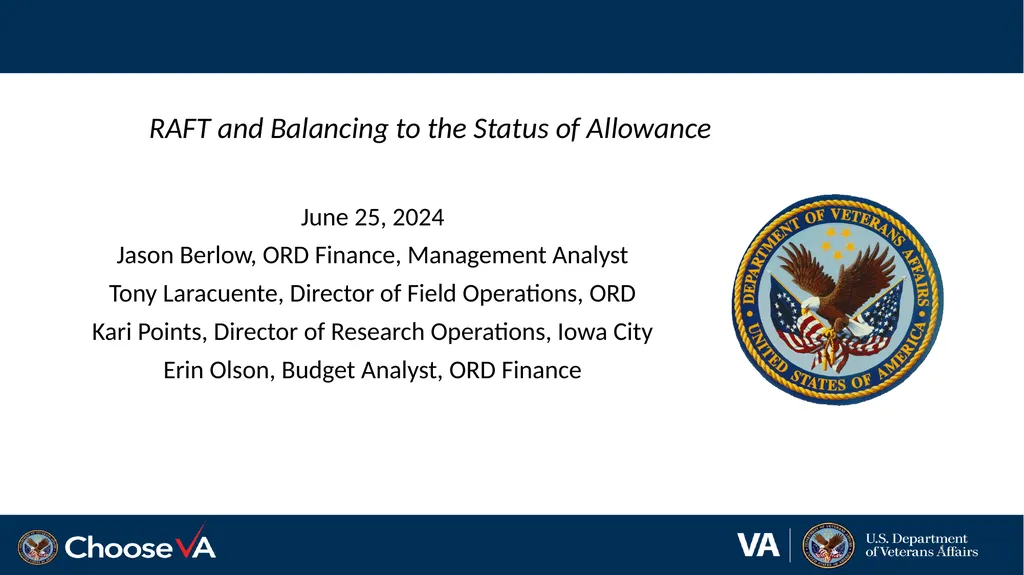RAFT and Balancing to the Status of Allowance 1
Author : ellena-manuel | Published Date : 2025-06-23
Description: RAFT and Balancing to the Status of Allowance 1 June 25 2024 Jason Berlow ORD Finance Management Analyst Tony Laracuente Director of Field Operations ORD Kari Points Director of Research Operations Iowa City Erin Olson Budget
Presentation Embed Code
Download Presentation
Download
Presentation The PPT/PDF document
"RAFT and Balancing to the Status of Allowance 1" is the property of its rightful owner.
Permission is granted to download and print the materials on this website for personal, non-commercial use only,
and to display it on your personal computer provided you do not modify the materials and that you retain all
copyright notices contained in the materials. By downloading content from our website, you accept the terms of
this agreement.
Transcript:RAFT and Balancing to the Status of Allowance 1:
RAFT and Balancing to the Status of Allowance 1 June 25, 2024 Jason Berlow, ORD Finance, Management Analyst Tony Laracuente, Director of Field Operations, ORD Kari Points, Director of Research Operations, Iowa City Erin Olson, Budget Analyst, ORD Finance Objectives of Today’s Presentation 2 Section 1: The Importance of the Status of Allowance (SOA) 3 Section 1: Key Terms 4 Section 1: Keeping up with the SOA The SOA is the singular most important report available to provide you a picture of where your funds currently stand. The SOA ties to the F20D and in some cases the Running Balances (the VISTA/IFCAP Checkbook). It should be reviewed no less than weekly for the following: Items in undistributed Large balance changes Payroll distributions Accruals As you get closer to the end of the year it becomes very important (this is what ORD Finance looks at). The "pretty effect"– keeping a clean status. 5 Section 1: Where can I find the SOA? The SOA can be found two different ways: 6 Section 1: What are the differences in VSSC and Budget? 7 Section 1: Using the VSSC 8 Section 1: Using the VSSC 9 Section 1: Using the VSSC 10 Section 1: Using the VSSC 11 Section 1: Using the VSSC 12 Section 1: Using the VSSC 13 Section 1: Using Budget SOA 14 Section 2: Balancing to the SOA 15 Section 2: Balancing to the SOA - Ceilings 16 The ceiling is the FMS Budget column on the SOA. It represents the amount of funds you have received for the year. It is important to balance your ceilings as TDAs come in throughout the year. The ceilings should be balanced to whatever system you use to track your budget (WinRMS, excel). Each time you ask Fiscal to place a TDA into a FCP, you should check the SOA the next day to ensure that it balances. You should periodically balance your ceilings to ensure that no changes have been made that you are not aware of. Balancing your ceilings means that the following all have the same amount for the FCP you are balancing: The funds in your FMS Budget column on the SOA. The TDA amounts that you have received and requested that Fiscal place in the FCP. The amount that you have allocated for that FCP into your tracking database. Section 2: Balancing to the SOA - Ceilings Ceiling














